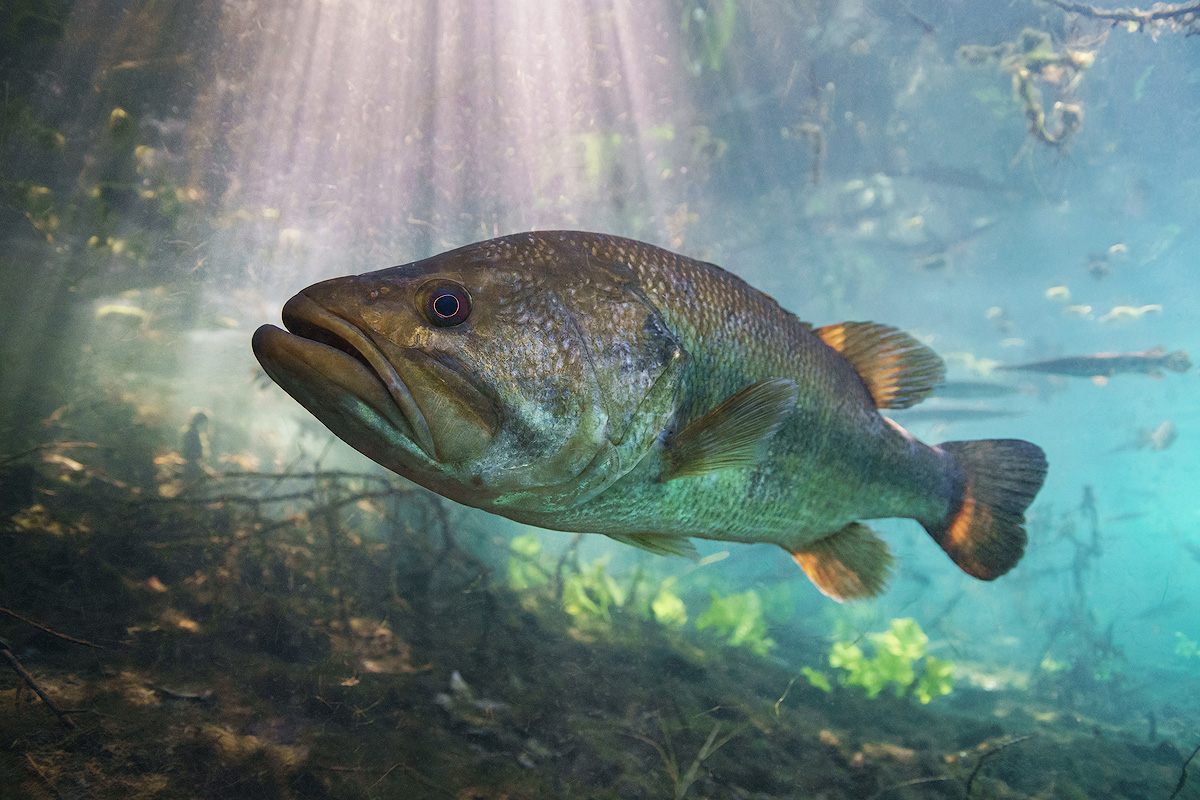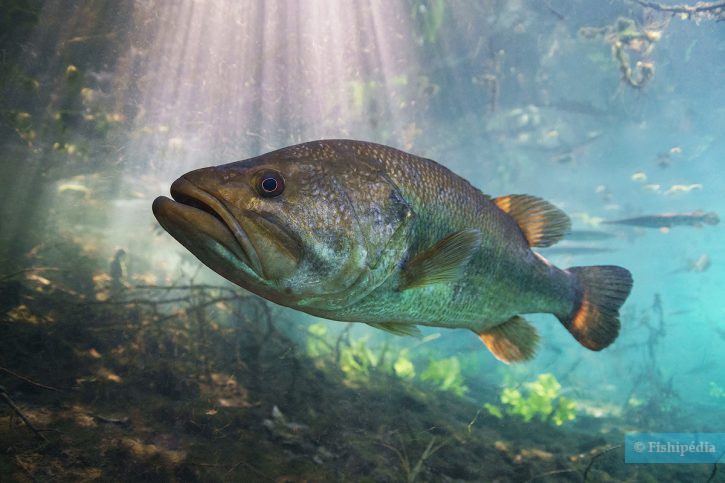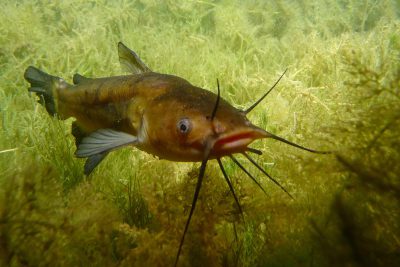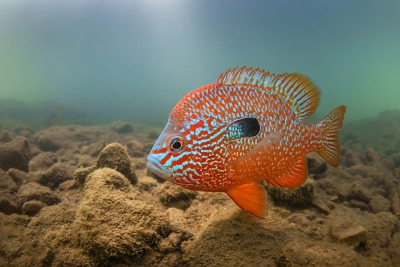largemouth black bass
| Scientific name | Micropterus salmoides |
|---|---|
| Descriptor | Lacepède |
| Year of description | 1802 |
| IUCN category (World) | LC |
| Family | Centrarchidae |
| Genus | Micropterus |


Introduction
Micropterus salmoides, commonly known as largemouth black bass, is a fresh water fish.
This sheet is currently being prepared. The texts currently proposed come from our data model or are being drafted. To request priority for this content, you can write to us HERE.
Who is it?
Morphology
-
Average size50 cm
-
Maximum size70 cm
-
Average size50 cm
-
Maximum size70 cm
How to recognize This fish ?
The largemouth black bass measures between 50 and 70 cm. This fish is unicolore with a predominantly argent body.
Behaviour & Life cycle
-
dietcarnivorous
-
Sociabilityliving as a couple or alone
-
territorialYes
-
Way of livingdiurnal
The largemouth black bass hunts in the stalk and is one of the predators of its biotope. Opportunistic, it does not hesitate to attack any smaller animal nearby.
The largemouth black bass is a fish living as a couple or alone naturally found at mid-depth and near the bottom. This species is carnivorous .
The largemouth black bass is a territorial animal that does not tolerate any incursions into its living area. It is particularly virulent against other territorial species and it can provoke heated fights. Relationships between conspecifics are also hectic, with each seeking to secure its place.
Reproduction
-
Reproductionovipare qui pond sur substrat découvert
The largemouth black bass is a fish ovipare qui pond sur substrat découvert.
Harmless species
This species does not represent any particular threats to humans when encountered in its natural environment.
Origin and distribution
What is its habitat?
Natural environment characteristics
-
Temperature5 - 32 °C
-
FlowSlow and Stagnant
Biotope presentation
The acidification of water comes from the decomposition of plants. This phenomenon changes the color of the water, which tends to turn brown. In some areas particularly rich in organic matter, the water is so dark that it is called "black water".
Species of the same biotope
To go further
Sources & Contributions
Participation & Validation
The Fishipedia team and specialist contributors are committed to providing high-quality content. However, although the information comes from scientific sources or testimonials from specialists, the cards may contain inaccuracies.

Benoit Chartrer

Patrick Chartrer
Translation
Translation done with the valuable contribution of our translators, who make this information available to a wider audience. We sincerely thank them for their commitment.
Bibliographic references
DIETS OF MICROPTERUS SALMOIDES LAC. AND ESOX LUCIUS L. IN LAKE TRASIMENO (UMBRIA, ITALY) AND THEIR DIET OVERLAP - M. LORENZONI - M. CORBOLI - A. J.M. DÖRR - G. GIOVINAZZO - S. SELVI - M. MEARELLI - Bull. Fr. Pêche Piscic. - 2008.
Feeding Habits of an Introduced Large Mouth Bass, Micropterus salmoides (Perciformes; Centrachidae), and Its Influence on Ichthyofauna in the Lake Okjeong, Korea - Myeong-Hun Ko - Jong-Young Park - Yong-Joo Lee - KOREAN JOURNAL OF ICHTHYOLOGY - 2008.
Invasive smallmouth bass (Micropterus dolomieu): History, impacts, and control - Grace L. Loppnow - Kris Vascotto - Reabic - 2013.
Ontogenetic diet shifts and interrupted piscivoryin introduced largemouth bass (Micropterus salmoides) - Emili García‐Berthou - International Review of Hydrobiology - 2002.
New data on the distribution of pumpkinseed Lepomis gibbosus and largemouth bass Micropterus salmoides, and of non endemic Iberian gudgeon Gobio lozanoi in the Galicia region (NW Spain) - Cesar Ayres - Reabic - 2009.
The relationship between the exotic predators Micropterus salmoides and Serranochromis robustus and native stream fishes in Zimbabwe - B. Gratwicke - B. E. Marshall - journal of fish biology - 2005.
Scientific partners
Tags
Species of the same family
Same genus
Species of the same biotope


















